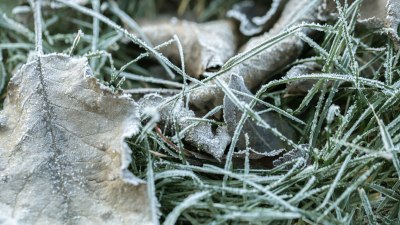How to Take Deep Breaths and Pretend You’re Not Freezing
Learn how to master deep breathing techniques to combat cold stress and stay relaxed.

In our fast-paced and often stressful lives, it's easy to feel overwhelmed by the challenges we face. One of those challenges, particularly in colder months, is the discomfort of temperature drops. It's essential to find effective techniques that not only help manage physical discomfort but also promote mental clarity. Deep breathing is one such technique that can serve as a powerful tool in our personal toolbox for coping with stress and discomfort.
Deep breathing has been a part of various cultures and practices for centuries. It is used in meditation, yoga, and relaxation therapies. This simple yet effective technique involves focusing on your breath, which can significantly affect your mental and emotional state. In this guide, we will delve into the art of deep breathing and how it can help you maintain a calm and relaxed demeanor, even when the temperature outside suggests otherwise.
Understanding Deep Breathing
Deep breathing is often referred to as diaphragmatic breathing or abdominal breathing. It involves drawing air deep into your lungs by engaging your diaphragm instead of shallow breathing that primarily occurs in the chest. Proper deep breathing significantly enhances the oxygen supply in your body and encourages full oxygen exchange, leading to a variety of benefits.
When you take deep breaths, your body naturally relaxes. The process of deep breathing activates your parasympathetic nervous system, which helps reduce stress levels and brings about a feeling of calmness. This is particularly useful when you're feeling the chilling effects of cold weather. Moreover, taking deep breaths can also bring mental clarity, allowing you to focus better and think clearly despite the discomfort.
Benefits of Deep Breathing
Practicing deep breathing has numerous benefits that go beyond just feeling warm. Here are some noteworthy advantages:
- Reduces stress: When you're cold, your body responds with stress. Deep breathing helps counteract this reaction.
- Improves focus: By calming your mind, deep breathing allows for better concentration and productivity.
- Enhances emotional well-being: Deep breathing can improve your mood and provide mental resilience amid challenges.
- Promotes relaxation: Engaging in deep breathing exercises before or after exposure to cold can create a relaxing effect, warming you from within.
These benefits make deep breathing a key technique to employ when you're dealing with the discomfort that cold temperatures often bring. The next step is learning how to properly engage in deep breathing.
Step-by-Step Guide to Deep Breathing
Here’s a straightforward guide on how to incorporate deep breathing into your routine, particularly when faced with the chilly temperatures.
Step 1: Find a Comfortable Position
Start by finding a comfortable position. You can either sit or lie down. Ensure that your posture is straight, allowing your lungs to expand fully. If you're standing, make sure your weight is distributed evenly on both feet.
Step 2: Close Your Eyes
While this step is optional, closing your eyes can help eliminate distractions and enhance your focus on your breathing.
Step 3: Inhale Deeply
Inhale deeply through your nose for a count of four. Allow your abdomen to rise as you fill your lungs with air. Ensure you're breathing from your diaphragm, not just your chest.
Step 4: Hold Your Breath
Once you've inhaled fully, hold your breath for a count of four. This pause allows the oxygen to circulate throughout your body.
Step 5: Exhale Slowly
Exhale slowly through your mouth for a count of six to eight. As you exhale, let go of any tension and visualize the stress leaving your body.
Step 6: Repeat
Repeat this cycle for several minutes. Aim for at least five minutes to start, gradually increasing the duration as you become more comfortable with the technique.
Incorporating Deep Breathing into Your Daily Routine
Integrating deep breathing exercises into your daily life can be an effective strategy, especially during the colder months. Here are some tips on how to do so:
- Morning Ritual: Start your day with five minutes of deep breathing. This sets a calm tone for your day ahead.
- Pre/Post-Workout: Utilize deep breathing before and/or after any physical activity to maximize oxygen intake and promote recovery.
- During Breaks: Take a few minutes during your work breaks to practice deep breathing to mitigate stress and refresh your mindset.
- Bedtime Routine: Incorporating a few deep breaths before bedtime can help signal your body that it's time to unwind and prepare for sleep.
Using these tips can create a habit that becomes second nature, allowing you to utilize deep breathing at any moment, making it easier to cope with cold stress.
Mind over Matter: The Mental Aspect
Beyond the physical benefits, deep breathing can help shift your perspective on cold. When you feel freezing, your mind may instinctively react with negative thoughts or discomfort. By consciously engaging in deep breathing, you can reframe this experience.
Imagine taking deep breaths and envisioning warmth flooding through your body. Use visualization techniques to picture yourself in a warm environment, such as a sunny beach or cozy room filled with soft blankets. Combining these mental exercises with your deep breathing practice can amplify the soothing effects, helping you pretend that you're not freezing.
Combine with Physical Activity
Staying active during colder months can also help combat feelings of chilliness. Incorporate light exercises such as yoga, stretching, or brisk walking, and combine these with your deep breathing practice. Movement generates body heat, making it easier to manage discomfort from cold temperatures.
Adapting the Environment
In addition to breathwork and physical activity, there are environmental adaptations that can help minimize the impact of cold on your body. Wearing layers of clothing, choosing materials that retain heat, and utilizing hot beverages can provide external warmth while your internal systems adjust through deep breathing.
Deep breathing is a powerful technique that can provide immediate relief for the discomfort caused by cold. By incorporating deep breathing into your daily routine, you cultivate resilience against the chills and manage the overall stress that often accompanies the colder months. Mastering this skill allows you to harness the power of your breath to maintain calm, clarity, and comfort regardless of your external environment. So whenever you feel like you're about to freeze, remember to take a moment to breathe deeply and reclaim your inner warmth.











